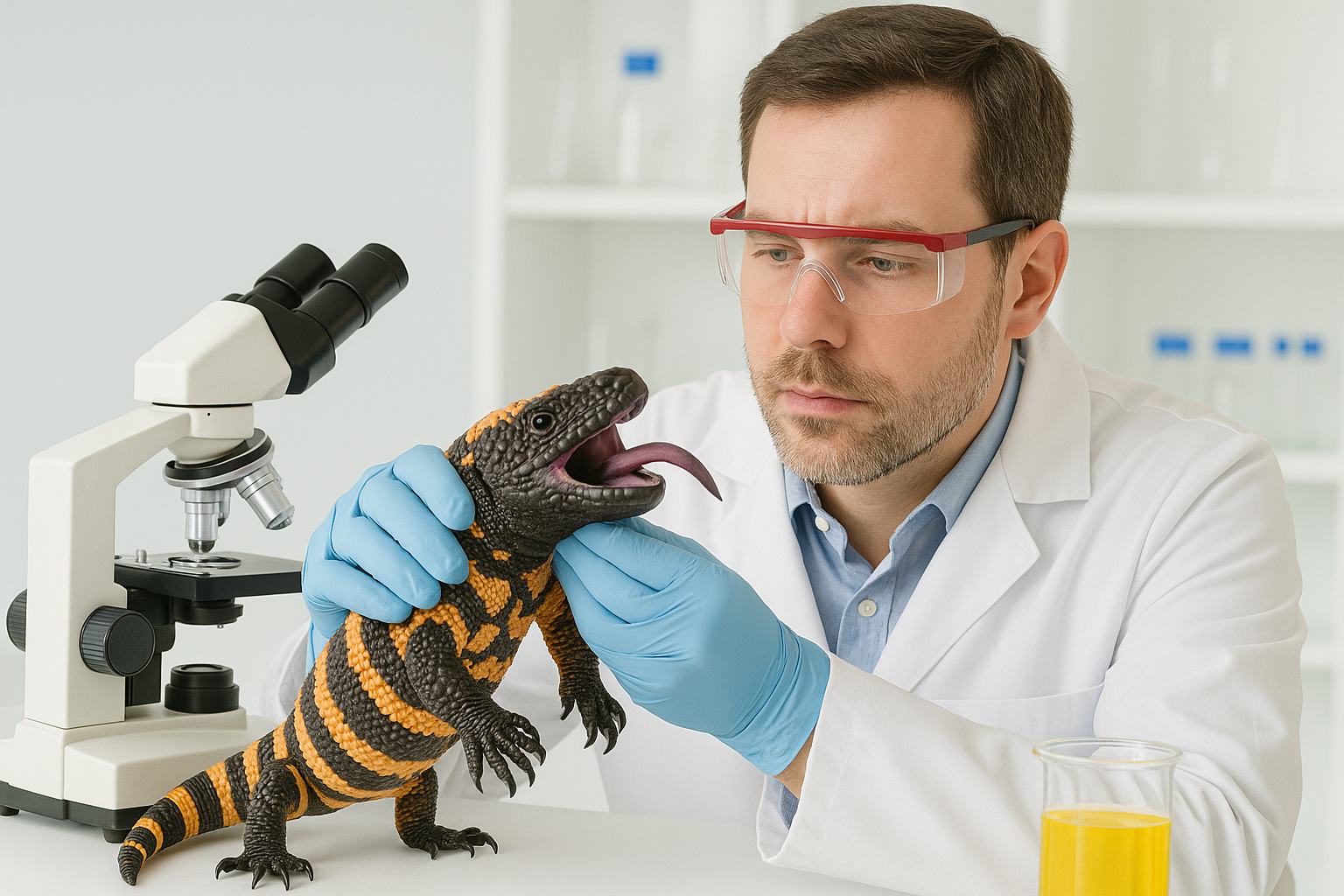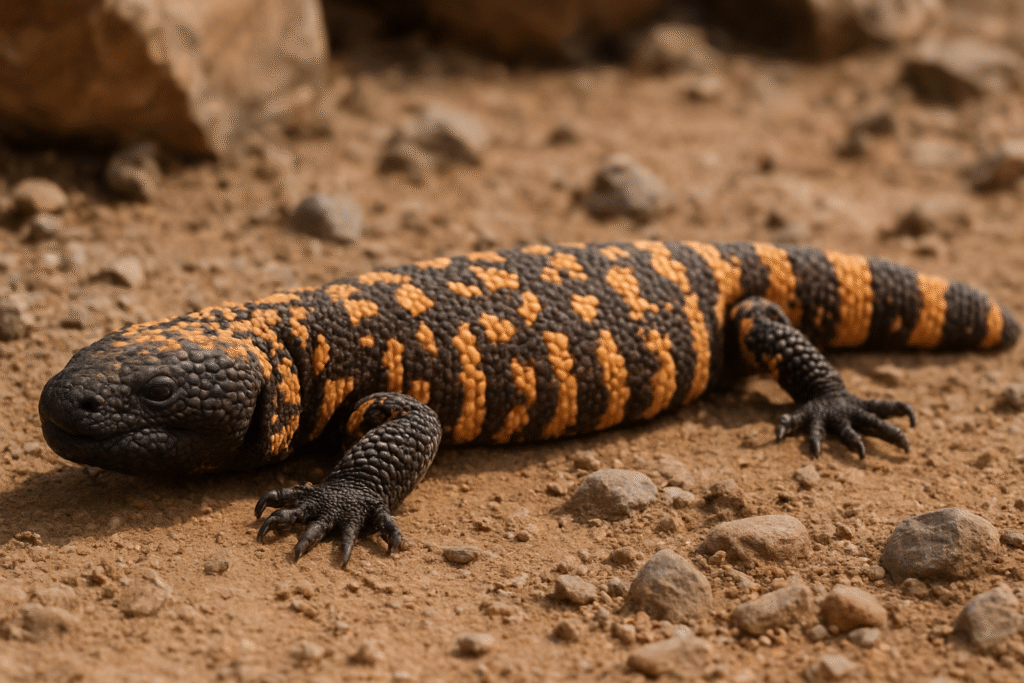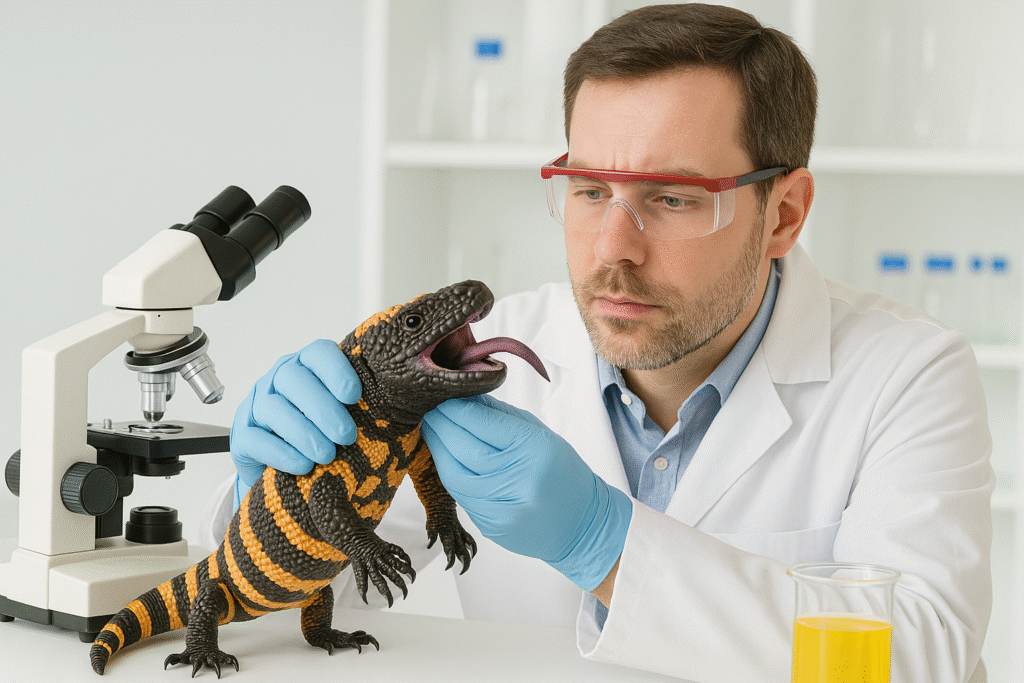“What do Ozempic and a venomous lizard have in common? More than you think.”
Wait… what does a desert lizard have to do with your Ozempic shot? Turns out: a lot more than you’d expect.
Table of Contents
🦎 The Gila monster: Not just a weird-looking lizard
The Gila monster (pronounced “hee-luh”) is a slow-moving, desert-dwelling reptile native to the southwestern United States. It’s one of the very few venomous lizards in the world — but don’t worry, it doesn’t bite often.
What makes it fascinating (especially for science nerds like us)? Its saliva contains a powerful compound called exendin-4, which mimics a human hormone known as GLP-1 — the same hormone behind Ozempic.
So yes, your weekly GLP-1 shot has roots in desert lizard spit. Wild, right?
From lizard venom to life-changing medication
Back in the 1990s, researchers noticed something special about the Gila monster’s biology: it could go weeks without food, yet stay metabolically stable. Scientists wondered, how?
Turns out, its venom contains exendin-4, which acts like glucagon-like peptide-1 (GLP-1) — a hormone that helps regulate blood sugar, appetite, and digestion in humans.
This led to the development of exenatide (Byetta), the first GLP-1 receptor agonist approved for type 2 diabetes. And later? More advanced versions like semaglutide — the active ingredient in Ozempic and Wegovy.
What GLP-1 does. And why it works for you
If you’ve ever wondered how Ozempic helps with weight loss, here’s the short version:
- It slows how quickly food leaves your stomach 🕒
- It reduces your appetite (you feel full faster) 🍽️
- It helps stabilize blood sugar by boosting insulin after meals 💉
Basically, it tells your body, “You’re not as hungry as you think you are. Let’s chill for a sec.”
And that message? It’s inspired by the biology of a lizard that doesn’t need to eat for weeks. Nature is kind of amazing.
A scientist behind the magic: Dr. Daniel Drucker
Much of this discovery can be traced to Dr. Daniel Drucker, a Canadian endocrinologist who studied GLP-1 in the 1980s and 90s. He was among the first to recognize the hormone’s potential for treating diabetes and obesity.
His research laid the groundwork for what would become a billion-dollar class of drugs — and yes, your little injection is part of that.
Is that… Safe though?
Absolutely. You’re not injecting lizard venom. You’re using a synthetic version of a hormone inspired by it.
Semaglutide (the active ingredient in Ozempic) is a lab-engineered peptide designed to work like exendin-4 — but with better performance and fewer risks. It’s been FDA-approved and thoroughly tested.
TL;DR: Inspired by nature, perfected by science.
✨ Why this story matters
Knowing where your medication comes from can change how you feel about it.
- It’s not “just a drug” — it’s the result of decades of discovery and collaboration between nature and science.
- It shows you’re not weak for needing help — you’re using a powerful, well-researched tool.
- And let’s be honest: it makes a pretty badass story to tell at brunch.
Is Ozempic made from actual lizard venom?
Nope. It’s based on exendin-4 found in the Gila monster, but fully synthetic.
What does GLP-1 stand for?
Glucagon-like peptide-1 — a hormone that regulates blood sugar and appetite.
What makes Ozempic different from older GLP-1 drugs?
Semaglutide lasts longer and works more effectively than early versions like exenatide.






